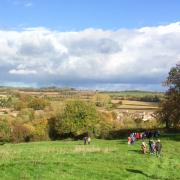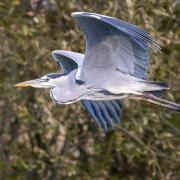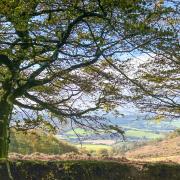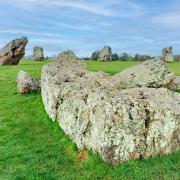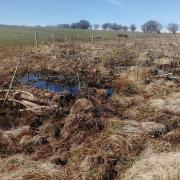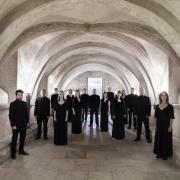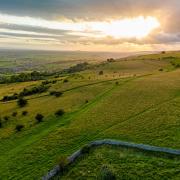Meet Judith Peasland, a Weston artist who uses local inspiration to create her remarkable paintings.
Meet Judith Peasland, a Weston artist who uses local inspiration to create her remarkable paintings.
Judith Peasland is an artist who finds a wealth of inspiration in the land and seascapes of Weston-super-Mare, where she lives. "Painting is a constant challenge to create an image that remains fresh," she said. "For me, painting's about revisiting a site or scene and seeing new things. Creativity can't be taught. A painting demands something more than technical expertise. It can have perfect perspective, composition and colour, but it needs to capture something about life, move people, to come alive. That's what I strive for. I'm very self-critical."
When did the drive to paint come?
"As my family were in the antiques business, I grew up among beautiful objects. Long before I went to art school, I spent hours visiting London's National Gallery and in the British Museum studying Michelangelo's drawings. Drawing is the key skill for any artist. I was lucky to have a firm foundation in it at Chelsea School of Art and practice at life drawing in Bristol, where I took my degree."
Judith decided to train as a teacher to secure a career. Two years' primary teaching in London's tough New Cross district decided her: teaching was not for her. She returned to art via two years' study at the Royal Academy of Arts and met her husband, Clive.
"We moved to Weston in 1987 and have never looked back. It's such a contrast to London's hustle and bustle, but I feel at home here. It's somewhere I can be creative. I love the coast, with its open vistas of sea and sky and the Somerset countryside. I also like the scale of Weston and its Victorian architecture.
"I took time out to paint and draw when I could, but it wasn't until our children were older that I could settle down to really concentrate on art. It was then I discovered the Quarry. I love it; there's a strong sense of history and time."
Judith has been based at Weston's Town Quarry since 2000, one of several artists and craftspeople with studios in converted industrial buildings. Between 1816 and 1953, vast quantities of limestone were hewn here, creating the handsome terraces and boarding houses of seaside Weston. Shot blasting punctuated the days. Now Town Quarry is an industrial monument and the loudest sounds are the screams of a peregrine nesting in the towering rock face and blacksmith Nathan Bennett's hammer as he smites hot iron on his anvil in the old crushing plant.
"I set out to show the nature of his work," continued Judith, showing me her painting of Nathan, "and took the disused building, now glowing with coals from his forge, as the backdrop. He represents something very important to me, traditional skills that could be lost in a generation. I was really pleased when Nathan said how much he liked the painting and bought it."
Judith was struck by the view from Nathan's forge and made it the subject of 'Quarry 1'. The veracity and strength of this painting immediately appealed to Chris Richards. Now Researcher for North Somerset Museum in Weston, Chris has worked many years in quarrying and well understands the narrative behind the scene. He had no hesitation in buying it for the Museum, where it was exhibited in 'New Light on Old Views' in 2008.
"Judith's viewpoint looks out at the distant freedom of sky and space from within the imprisoning wreckage of the 1930s crushing and screening plant," explained Chris, when we explored the quarry. "It's a skeleton of rusting steel and concrete from which the living organs of production have been removed. The arc of shaft-like silos dominating the foreground held graded dust and gravel. They could be a death trap. Quarrying was, and still is, dangerous."
After the Quarry, Judith took me to Pier View, a small building full of light with a marvellous outlook over old Birnbeck Pier, the Bristol Channel and on to Wales. Pier View has been her temporary studio for a series of paintings and drawings.
"I find certain places moving, especially as the seasons and the light change. This is my basis for painting. I'm so glad when I get here. I'm completely absorbed; the hours pass without my noticing. Low tide, when sea and sky seem infinite, is my favourite time, but it's unbelievable how fast the sea comes in, racing over the sands.
"You have to take your chances with painting and carry on working whether you're in the mood or not. I've taken the opportunity to paint the old pier before any new commercial development, so that I can capture it before it's altered for ever."
We completed our tour of Weston and the places that have inspired Judith at Uphill. From the boatyard, where Judith keeps a small boat as a place to paint, we climbed the hill, crowned with its Norman church.
"It's ideal for me, an out-of-the-way spot. I'm drawn to the meeting of land and sea here with Brean Down meandering its way to the waves and the views from Uphill Church over the Axe estuary to the Mendips."
With thanks to Chris Richards and Roger Vercoe of North Somerset Museum and to Nathan Bennett.





